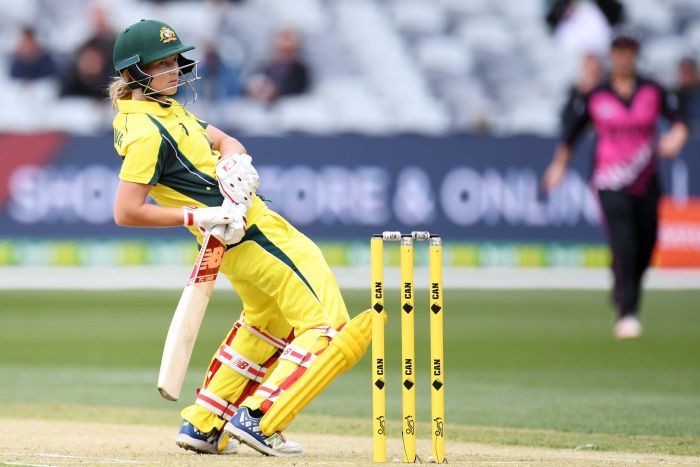What’s in a Name?
0By Harbour Heather
 Earlier this week, Cricket Australia announced that they were dropping the Southern Stars moniker for their premier ladies team.
Earlier this week, Cricket Australia announced that they were dropping the Southern Stars moniker for their premier ladies team.
In order not to lose the history attached to the name it will remain as a colloquial reference, but in all official CA communications, the team will be referred to as the Australian Women’s Cricket Team.
Everyone from the dressing room to the boardroom has come out in support of the move, holding it up as another major step in gender equality, following on from a significant new pay deal for Aussie’s best female cricketers announced earlier in the year.
The decision is to be applauded, especially because the players themselves are not comfortable with the name. Not so much the name itself, but its existence. All they, and any female sports team, want is an equal footing and equitable treatment. The amusing point in this scenario is that the Australian Women’s Cricket team are on equal footing with counterparts in other sports. The Hockeyroos, Jillaroos, Wallaroos (sensing a theme here) sit alongside their male colleagues of the Kookaburras, Kangaroos and Wallabies. It is, in fact, the Australian men’s cricket side who are the odd ones out. They are one of the only top level representative teams in Australian sports never to have officially adopted a moniker.
This opens up an interesting point of discussion. What’s in a name? And when is one necessary?
A moniker assists with brand recognition, and any sports fan can tell you how much of a business sports are these days, when players refer to the ‘organisation’ and not the ‘team’. As professionalism took off in the mid-90s, women’s teams and minor sports wanting to capitalise on any brief exposure opportunities needed to have something to make them memorable.
In major franchise competitions, where money is endgame and marketability is at its peak, it is common sense to develop a brand based upon a recognisable or relatable facet of the team’s home base. Uniting the public and providing something they can emotionally attach themselves to is Marketing 101: Know Your Audience. Being called the Bears brings merchandise opportunities, mascot possibilities and endless headline potential. Cut through achieved. In multi-team cities (a reality for most countries bigger than we are), this is especially important. Lakers and Clippers. Cubs and White Sox. Then you have City and United, an interesting middle ground where blue versus red is enough.
Like Cricket Australia have decided, national sporting teams could do without these monikers. That uniting factor mentioned above is being the national representative side. The best players representing their country should be enough for fans to rally behind. But here in New Zealand, it’s as if you’re not truly a national side until you have a moniker. Many are uninspired choices, desperate to replicate the success and power of the All Blacks brand (which, remember, was a typo). This was even explicitly mentioned when the national sevens side was rebranded as the All Black Sevens – which, given their recent lack of successes, may be doing more harm to the All Blacks brand than good for the Sevens brand.
That said, a special shout out to hockey for potentially being the most equitable sport. Black Sticks is gender neutral, and now we’re past the introductory period, doesn’t cause confusion. Smaller sports like hockey might see more value in having one brand, and not diluting their exposure opportunities by attempting to get the sporting public familiar with two. Black Sticks = hockey is much easier to remember than calling the men’s team Black Sticks and the women’s White Sticks. Or Silver Sticks. Or Hockey Ferns. Or Fern Sticks. (Wait…. The men could be Stick Men! A partnership with Pak ‘N’ Sav writes itself.)
No doubt a vast number of branding experts, academics and sports administrators have contributed to this conversation and decided that brand identity in a busy media market, with strong competitors, is essential for any team wanting to be taken seriously. It would be interesting to know if the behind-closed-doors discussions at Cricket Australia ever even slightly broached the idea of naming their men’s side, and if the women would’ve been just as happy with this equitable outcome as the one they’ve been asking for.
Follow Heather on Twitter
